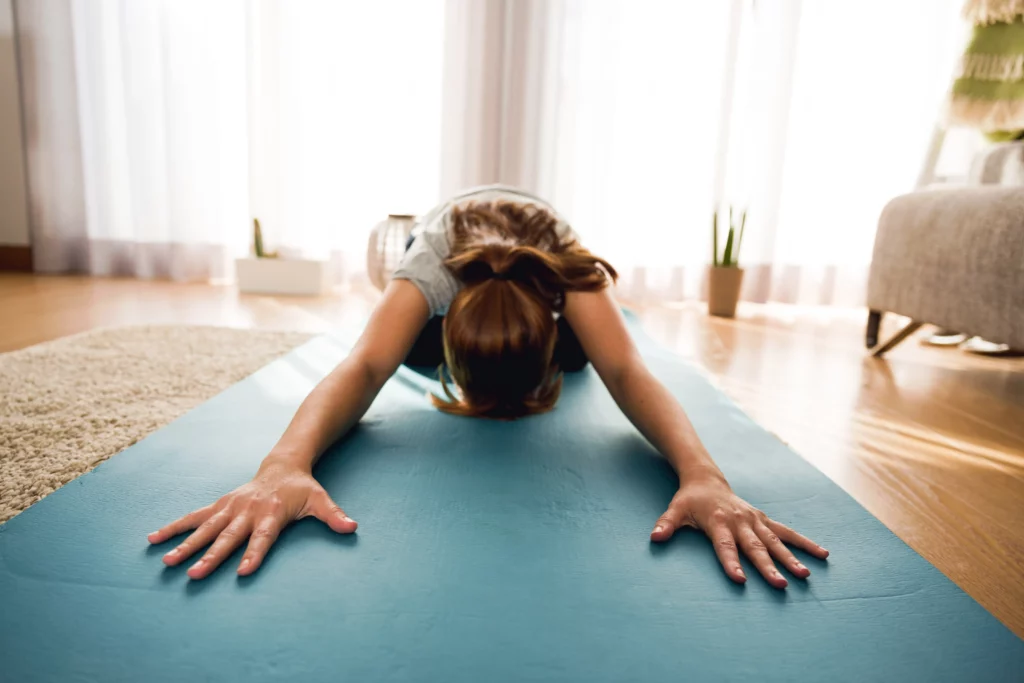Pilates: Core Activation vs. Bracing

Why harder levels don’t mean you are going to get better quicker!
Pilates is a mind-body exercise technique that emphasises the importance of beginning movement from a central core of stability. The overall aims of pilates are to develop the deep, postural ‘core’ muscles that support the spine throughout movement, enhance normal movement patterns and improve overall body alignment.
As Pilates focus is on movement originating from a stable core, the pilates method works by adjusting the intensity of each pilates movement, by using various limb movements and resistance (pilates equipment) to challenge our core in static and dynamic movements.
Looking at a person exteriorly, it’s impossible to say whether someone has a strong core or not, with the exception of possibly viewing someone’s abdominal strength by being able to see their abdominal muscles. The abdominal muscles are the superficial muscles at the front and side of the tummy including your rectus abdominus and your obliques. The core muscles are much deeper in the body, these muscles include the transverse abdominis, pelvic floor, diaphragm and multifidus.


Obviously, having strong abdominal muscles is important, but so is also having a strong core. Having a strong core helps your body’s performance in daily activities as well as sport and can even help prevent future injuries. Generally speaking, you don’t strengthen your core when doing classic exercise such as planks or sit ups, these exercises use the big abdominal muscle groups. So how do we strengthen the core?
To strengthen the core, we need to first be able to activate it. The inner core is most easily activated when we adopt our neutral spine position. Once we have found our neutral spine, try activating your inner core using the instructions below:
First find your neutral spine position. Then place your fingertips onto the bony prominences on the sides of your pelvis. Now move your fingertips one inch inwards and downwards from these bony points. Your fingertips are now placed directly over the deep internal oblique and transverse abdominis muscle. To activate your centre, imagine you are tucking in your stomach to tighten your belt by 1 notch/gently tucking your tummy just a millimetre away from your trousers, this is a very small movement which requires little effort, you should feel a slight tension under your fingertips, but the muscle should not bulge. Adjust the effort of the contraction to feel just a slight tension. This slight contraction is the activation of your transverse abdominis, which is one of the muscles in the inner core.
What’s the difference between core activation and bracing?
Well, you’ve found your transverse abdominis contraction. If you fully contract to 100% effort, this is known as bracing, as you are bracing all your muscles forcibly together with no real control. However, if you maintain a constant 20% contraction of your transverse abdominis, this is known as inner core activation. This activation is what we want to achieve and maintain throughout the duration of our pilates classes to enable movement deriving from a strong activated inner core as opposed to a braced core.
So, why does harder level exercise variations not mean I will get better quicker?
This is because in harder level exercise variations, if we haven’t mastered the muscular control and inner core activation we will end up bracing our abdominals in order to complete the more challenging variation. Therefore, starting on the lower level pilates exercise, working on inner core activation and maintenance is the key before progressing too quickly through the more challenging levels.
However, this doesn’t mean by any stretch that exercises such as sit ups, plank and side planks etc are bad or damaging for you!
Our pilates instructors are always happy to help, so if you have any questions about your pilates feel free to grab them for a chat at one of our pilates classes.

